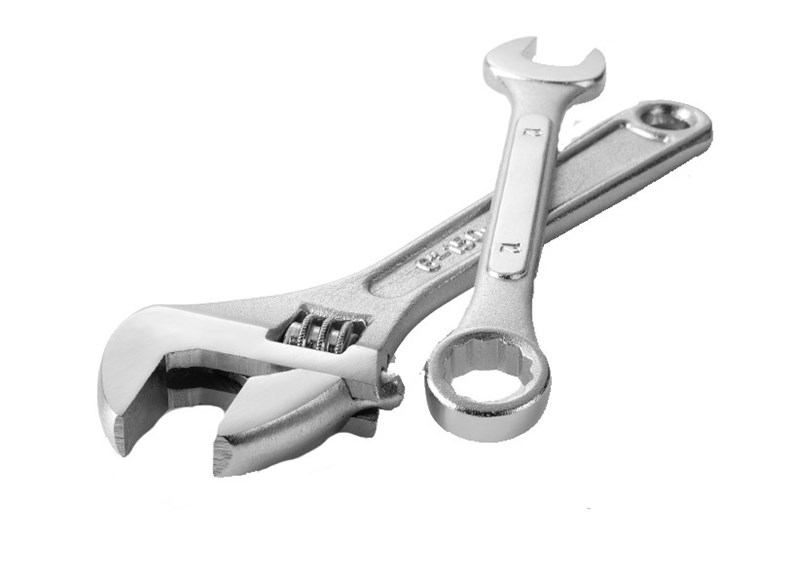Apartment-dwelling New Yorkers have a tendency to spoil their trash. That is, they allow it to stink.
"When people think of garbage rooms, they think of having to tolerate bad smells because it comes along with the territory," says Paul Pizem, a sales manager for Aireactor, a company that provides deodorizing services. "This doesn't have to be the case."
According to Pizem, garbage odors are easily managed in buildings with a competent management staff, despite the fact that the average New Yorker is personally responsible for disposing of roughly four-and-a-half pounds of waste each day, which adds up quickly in a high-rise. And yet, according to many people in the waste management business, most tenants hesitate to impose definable standards on the quality of a building's trash compactor, the cleanliness of the garbage chute, or the smell of a garbage room. Because garbage connotes a certain amount of eye-watering, nose-plugging unpleasantness, it is often let off the hook by building residents based on the argument that it is what it is - garbage.
And yet, there are ample services available to reduce - and neutralize - the odors, health risks, fire hazards and infestation problems that are associated with organic and toxic waste. It's up to tenants themselves to evaluate whether or not their building is making room in the budget to utilize these services - preferably before there is an obvious need to do so.
No need to don nose-plugs, goggles and industrial gloves to take a closer look at your building's trash cycle; you can conduct a valuable inspection by simply knowing the right questions to ask. To begin, why is there so much trash to contend with?
Prior to the 1980s, waste disposal was a fairly simple matter for the residents and managers of New York City's apartment buildings. Curbside recycling programs had yet to be introduced, so tenants had no reason to separate their refuse: a carton of juice, a can of peas and an eggshell were cohabitants in the vast urban wasteland. Additionally, building managers didn't have to contend with the large volumes of organic waste that lead to rodent and odor problems, because this waste was incinerated at the end of its journey down the chute. Taking out the trash was more aptly described as taking out the tins of ash.
It wasn't until 1989 that a law passed banning incinerators, with a four-year window for residential buildings to phase them out of use completely. (Legislation had already passed in 1971 that banned newly constructed buildings from using incinerators.) Michael Importico, owner of Tower Recycling Systems, converted many buildings from incinerators to trash compactors. He says that while you can reduce trash volume by a one-to-five ratio using the compactors that are standard in high-rise buildings today, with incineration, it was more like one-to-fifty.
"Not to mention the fact that we have so much packaging these days, which wasn't true years back," Importico continues. "So not only do we burn less, we make more garbage now. It used to be [the case] that the super could go down once a week and clean the incinerator. Today, every day, you've got 30 or 40 bags to take out to the curb. We spit out a tremendous amount of garbage."
A tremendous amount indeed: Today's New Yorkers produce roughly 12,000 tons of garbage each day. (If you've ever taken away a small coffee and received a stack of napkins that could mop up the cup's entire contents five times over, this number may not have shock value.) According to Alan Levitt, owner of Apple Incinerator and Compaction, a midsize building of about 40 units will produce an average of 200 pounds of garbage a day.
Most mid- to large-size residential buildings with enough garbage volume have replaced their incinerators with trash compactor units. In this system, each floor has its own garbage room, where tenants can open a hopper door and express mail their bags of trash down a chute to the basement compactor. There it is compressed, bagged and carried out to the street.
This means that the garbage is in transit three times before it is hauled away by the city: from the apartment to the garbage room, from the garbage room to the basement, and from the basement to the street. Particularly in the chute itself, there is a great potential for the spillage of a flammable liquid like paint; of rotting organic waste that attracts vermin and rodents; or, least charming to imagine, perhaps, a day's worth of dirty diapers. Thus, for reasons that run the gamut from air quality to fire codes, it is essential that all these on-site garbage areas are kept clean - including the chute, which is hard to get at without the right equipment.
According to Gene Walker, owner of Metropolitan Compactor Services, "You have to maintain the system like you'd maintain a car. Preventive maintenance is important - you don't want to wait until something goes wrong."
Building managers have the option to either wash down the systems themselves, or to call in the services of a professional cleaning company. These companies provide full-service cleaning of compactor systems, including the hopper doors in the garbage rooms, the chute, and the base compactor. Craig Berlin, owner of Chute Master Indoor Environmental Services, a chute-cleaning company based in New Jersey, says that since his company launched in 1993 - when many looked at his business plan skeptically - people have gained a "greater sensitivity to the healthiness of their buildings," and the chute-cleaning industry has benefited.
"Now the buildings that don't have the service performed are really few and far between," says Berlin. "It's gone from a novel idea - a "˜wouldn't it be nice if' - to a multi-million dollar business."
Berlin says that when a new management company takes over a building, his company will often be called in for a cleaning. "For a couple hundred bucks, tenants immediately see and smell the difference, which is a wonderful reflection on the new management."
After a cleaning company has made a visit, tenants need not bury their heads inside their shirt collars when they toss out the trash. Opening the hopper doors, they will get hit with a fresh, citrusy scent, instead of the stench of their neighbor's leftover curry.
The decision of whether or not to use a professional cleaning service is most often a budgetary matter, at the discretion of building management. Levitt points to the irony of the fact that as trash volume and the complexity of disposing of it have increased, property managers have been granted more autonomy over the waste disposal process. "Incinerators were inspected by city agencies on a regular basis," says Levitt. "There is no requirement now that you maintain your compactor, or that you even have a compactor. You simply can't have an incinerator."
This means - barring any violation of standard health codes - that the tenants themselves are left to inspect their building's compactor system, which might necessitate a crash course in compactors.
According to experts, in the best-case waste-disposal scenario, a compactor chute will be made of steel, because there are fewer crevices for matter to stick to than in the brick chutes that were used for incinerators. Additionally, the most up-to-date compactors are watertight, rodent-resistant, and triggered to compact automatically when garbage is sent down the chute, rather than letting it build up until a superintendent turns on the machine.
A full inspection of the compactor system raises the question of whether multi-purpose chute systems, which channel both recycling and garbage, should be installed. Importico says that they are the only rational answer in the recycling age, but others disagree.
"These machines are expensive, they are trouble-prone, and only a small percentage of buildings in the city will be able to accommodate them," says Levitt, pointing out that most buildings squeeze compactors into rooms that were sized for incinerators. He adds that as New York scales back on its recycling program, the machines become that much less necessary.
Importico, on the other hand, believes that about 90 percent of the city's buildings should be able to accommodate multi-purpose chutes, and refutes the notion that the machines are troublesome. He does concede that the recycling systems are more expensive, running $20,000 to $25,000 as compared with about $6,000 to $7,000 for standard compactor units, but he says that the machine would pay itself back in three or four year's time.
"The manager in one of the buildings I work in has a guy on each shift who just takes care of recycling," Importico says. "This guy makes $15 an hour with benefits. That's a lot of money, not to mention the inconvenience when he holds up the elevators to stop at each floor and collect what's in the bins."
Walker sits in the middle of these two camps. He says that the systems are not widely used and require more service than single purpose chutes, but his company does incorporate these systems into their equipment at a building's request.
The most proactive tenants might choose to attack the issue of waste management right where all the dirty business begins: inside their own apartments. According to a Web site created by the New York City Department of Sanitation (DSNY), the best way to help the city manage its garbage is to waste less, the theory for which NYCWasteLess.org was named.
The Web site details five major steps that New York residents can take to capitalize on waste prevention opportunities. The first is reducing your junk mail by writing to the Direct Marketing Association requesting that your name be removed from its national mailing lists. Next, the site provides names of resources that welcome donations of reusable items like old furniture, clothing, and appliances. The third suggestion is to reduce packaging waste by bringing a reusable bag to the supermarket, or perhaps insisting to a coffee vendor that one napkin should do the trick. Tips four and five are, respectively, to use less toxic products and compost organic waste.
Some of this advice may require more gumption than you're willing to muster - like the suggestion to "take your polystyrene packaging peanuts to a nearby commercial packaging service like Mail Boxes, Etc. for reuse." However, the Web site's message still comes through. Because it is backed by the DSNY rather than by a general environmental group, a user can assume that these waste prevention tips will provide direct benefits to New York City residents.
"All buildings use some kind of deodorizing service, but for the most part these are deodorizers that hang from the wall and smell like strawberry or cherry," Pizem says. "They mask odors rather than neutralizing them, and in many cases what you end up with is the smell of decomposing waste, and cherry."
Smell familiar? Perhaps it's time to raise the bar and set new standards for your trash.







Comments
Leave a Comment